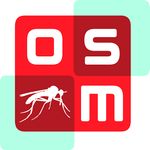OpenSourceMalaria:Story so far
The Story So Far in the Open Source Malaria (OSM) Project
The OSM project is primarily concerned with taking public domain compounds that have shown good activity in killing the malaria parasite in cells and improving the properties of those molecules in order to discover a compound that can enter Phase I clinical trials. This is phenotypic drug discovery project focussed on the hit-to-lead phase. The project operates on open source principles, in that everything is open.
History
In 2011 the Todd lab at The University of Sydney received funding for a pilot project in open source drug discovery from the Medicines for Malaria Venture (MMV). The project champion at the outset was Tim Wells. Jeremy Burrows came on board and led the suggestion to go after a few of the actives that had been placed in the public domain in 2010 by GlaxoSmithKline and others. Work got underway in the lab in August 2011. The team were successful in securing further funding from an Australian Research Council Linkage grant that has generated funding from May 2012 for three years.
Project Structure
The scientific idea behind the project is familiar medicinal chemistry methodology - the aim is to find a small molecule that is effective for the treatment of malaria, and that involves generating new molecules and evaluating them. Based on the biological results new analogs might be made or the series might be abandoned and another selected. Decisions to abandon series may be taken early because there are plenty of other series that are very attractive from a medchem perspective.
The crucial difference with this project though (as described in the 6 Laws) is that everything is open, meaning all the experiments go on the web (including the ones that did not turn out well). All the data are available. Anyone can do anything they wish with the compounds, with the proviso the project is cited (see CC-BY licence conditions below). Anyone can take part - people may make molecules, offer guidance and input in other ways that change the direction of the project as it is happening, i.e. rather than the release of all data at the end of the project, data are released as the project is happening so that people can become genuinely involved in the research. Thus the iterative cycle of analog synthesis in response to biological data that is normally guided by luck and medchem intuition is now guided by the intuition of the collective. Similarly, since the biological data are all open too, it should be easier to form an objective assessment of a molecule's performance divorced from the judgement of those closest to the compounds. In the same way that in software development "with enough eyeballs all bugs are shallow" the open nature of the research makes the science faster. This was found to be the case in a previous open source synthetic chemistry project involving the drug praziquantel.
Summary of Experimental Progress to Date
Several series of compounds have been examined, with the scientific detail being found on those pages.
Series 1 was based on an arylpyrrole that was one of the most attractive hits in the original GSK dataset. Ultimately this series was parked because the ester, which was metabolically unstable, could not be replaced with another functional group. A related set of compounds within this series (sometimes also referred to as Series 1a), the "Near Neighbours", displayed high potency but were found to be too insoluble. Series 2, the triazoloureas, appeared promising but there was a suggestion another team were working on this series, so it was parked. Series 3, the aminothienopyrimidines, is still under current investigation, though the analogs examined to date have been inactive and also suffer from low solubility. The OSM project is currently most active in Series 4, a compounds set that has originated from Pfizer, on which there is a significant quantity of data and which (unlike the previous series) has a suggested mechanism of action.
The compounds biologically evaluated to date (those assigned OSM codes) can be viewed: picture list, .sdf, old spreadsheet. The first 100 compounds were uploaded to ChEMBL.
How to Comment on What You're Reading
Comments/input/questions can be contributed via Google+ either by "+"-ing the project or in the Open Source Malaria Research Community, directly on the relevant Electronic Lab Notebooks, via Twitter, Facebook or by posting a new Issue to the GitHub To Do list. Much of the older project activity happened on the malaria pages of The Synaptic Leap. The page you're reading also has a "talk" tab for input if you would prefer, though there are no notifications active. Alternatively please write your own input somewhere (e.g., your own blog) and link to the project. Anonymity is perfectly acceptable, just less useful. Please avoid email if you can.
For the full summary of ways to join/interact/contribute, please see the "Join the Team" sheet on the OSM Landing Page.
Licence
The project's licence unless otherwise stated is CC-BY-3.0 meaning you can use whatever you want for whatever purpose, provided you cite the project.
